I have heard of the
American Academy of Arts and Letters, which is headquartered in
New York City, but until I ventured up to its annual ceremonial, as the guest of a guest (+1 of scholar and critic
Dorothy Wang) of a recent prize recipient, I had no idea where it was located or what its programs entailed. To put it simply, it's a big deal, or rather, a big
financial deal, as it annually awards many thousands of dollars (this year, I believe I heard the figure in the hundreds of thousands), in prizes and ceremonial awards to artists working in the fields of literature, the visual arts and sculpture, European art music (and perhaps other genres), and architecture. It's an august institution too: a closed honor society of 250 members selected and elected by standing members without outside nomination, it grew out of the National Institute of Arts and Letters, founded in 1898, consisting eventually of 200 members, from which the American Academy of Arts and Letters, a smaller and more elite sub-organization of 50 of the most eminent figures in their fields, emerged in 1904. US President
William Howard Taft signed a Congressional act that incorporated the Institute of Arts and Letters in 1907, and the Academy in 1916. In 1976 the two organizations merged, and in 1993, all 250 members merged into one entity now known as the American Academy of Arts and Letters.
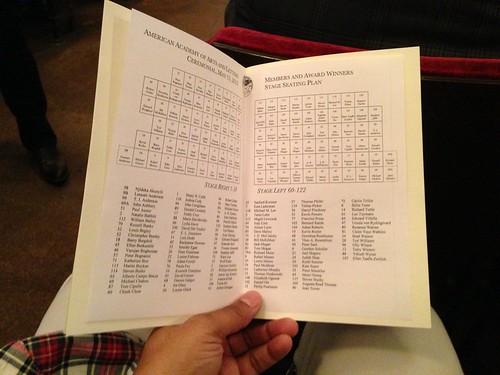 |
| The seating chart |
Who belongs to the American Academy, which operates like an Academie Française only without the single focus on language and with a far broader narrower mandate, at least ideally? The president is architect Henry Cobb, Vice Presidents for Literature include writers Ann Beattie, Yusef Komunyakaa and Tony Kushner, Vice Presidents for Music include composers John Corigliano and John Harbison, the secretary is architect Billie Tsien, and the Treasurer is composer Charles Wuorinen. Members include a number of major scholars and artists, ranging from Daniel Aaron, Edward Albee, Kwame Anthony Appiah, and Isabel Allende to Gary Wills, Olly Wilson, Terry Winters, and Ellen Taaffe Zwillich. Every year in the spring, a subset of these members, constituting committees in various fields, award lucrative prizes to selected artists without nomination, and present them at the annual "Ceremonial"--awards ceremony--at the Academy's building at Aububon Terrace, in Washington Heights, across a courtyard from the Hispanic Society of America, and next to what used to be the old headquarters of the national Museum of the American Indian, which is now located at Bowling Green in downtown Manhattan, and which Boricua College has replaced.
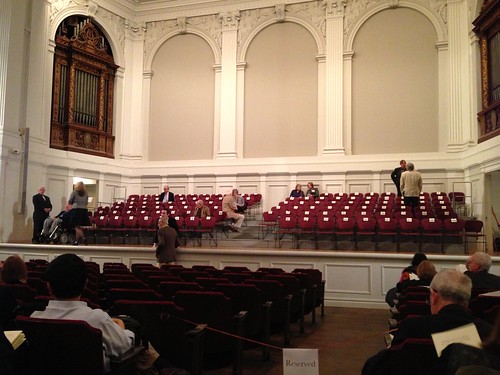 |
| The stage, with numbered seats |
Having never been to one of these shindigs I had no idea how it operated, but it appears that a certain number of members show up, along with the prize recipients, and are seated in a set order onstage, in order that an annual photograph be taken, and so that family members and friends can figure out who's who if you don't know them by sight. Also, distinguished figures in a given field hand out awards to peers and up-and-comers, so it was the case that Louise Glück, the Pulitzer Prize-winning poet, gave out awards to many of the literature awardees. There a few awards I'd heard of before, like the Rome Prize, which went to poet Peter Streckfus, and a number of others, including one for distinction on the radio, that went to Ira Glass, who gave one of the best brief speeches I've heard in a while, yet there were many others, with hefty awards attached, that went to creative people I'd never heard of. (No surprise there.) Also unfortunately, and unsurprisingly, as I commented to a friend, critic Dorothy Wang, and later to other writers and artists, very few winners were people of color; I think two black people (one writer, one artist), two asian-americans (both musicians), and a few latinos received awards, but most of the awardees were white, though at least half or more, like the presenters, were women, which is always a positive sign. I'm not sure if the proceedings are always so monochrome, because the membership does appear to be diverse, at least in certain fields, so I hope in other years a wider range of artists, reflecting the rich tapestry of this country, benefit.
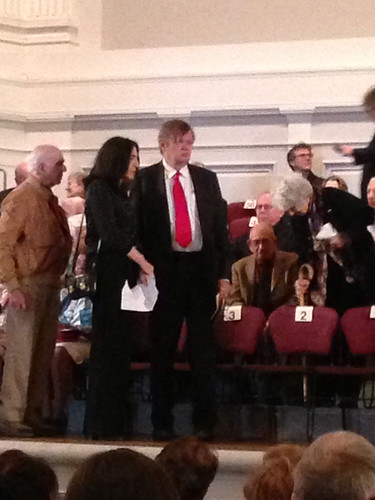 |
| Francine Prose and Garrison Keillor |
Michael Chabon delivered the Blashfield Address, a smart, sometimes funny lecture that explored the relationship between literature and rock and roll. It even invoked both Bob Dylan, who was slated to receive a major award but could not attend, Frank O'Hara and Rakim, among others. A friend, poet Joanna Klink, received one of the literature awards, and a fiction writer whose first novel unfolds like poetry, Briton Adam Foulds, received a prize given specifically to writers from Britain and Ireland. The highlight of the event was witnessing the awarding of the Gold Medal for Literature, which Paul Auster presented to one of my former and very best professors, E. L. Doctorow. One of the leading contemporary American fiction writers, recipient the National Book Award for Fiction, three National Book Critics Circle Awards for Fiction and the PEN/Faulkner Award, a longtime teacher at New York University and a former professional editor, Doctorow is perhaps best known for his inventive novelistic treatment of the life, trial and execution of Julius and Ethel Rosenberg, titled The Book of Daniel (1971), which pushed him to the front rank of American writers, and for his innovative, controversial novel Ragtime (1975), which later became an acclaimed film and a highly praised musical. Though mainly known for his novels that explore key historical moments through the depiction of society at multiple, overlapping levels, he is also a perceptive, suasive, politically pointed critic, and a superb short fiction writer. His speech, which concluded the event, was succinct and profound, and the perfect ending a ceremony of this type.
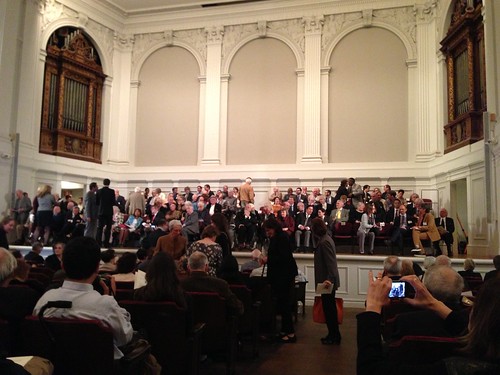 |
| The members, prize recipients and guests assembling |
After the awards, there was a tented reception behind the main building, and in an adjoining one, an exhibition of artworks and other materials, including scores, manuscripts, and much more, by award recipients. I did not get an opportunity to offer my congratulations to Doctorow, but I did get to chat briefly with composer T. J. Anderson II and his wife, whom I met aeons ago when the Dark Room hosted and feted him, artist Richard Hunt and late writer Leon Forrest, at the African Meeting House in Boston. I also got an opportunity to say hello to Olly Wilson, another African American composer who ought to be better known. I did not, however, meet Darryl Pinckney, who received one of the literature prizes; I'm a fan of his criticism, so I hope one of these days to meet him in person. Below are some photos from the day.
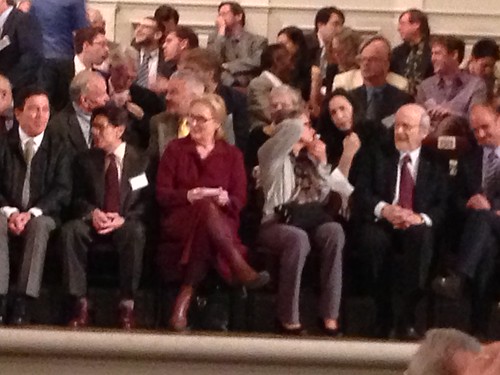 |
Nearly full section (l-r) unknown man, dancer Edward Villella, Meryl Streep,
Lydia Davis (speaking with Francine Prose), E. L. Doctorow, Damon Galgut |
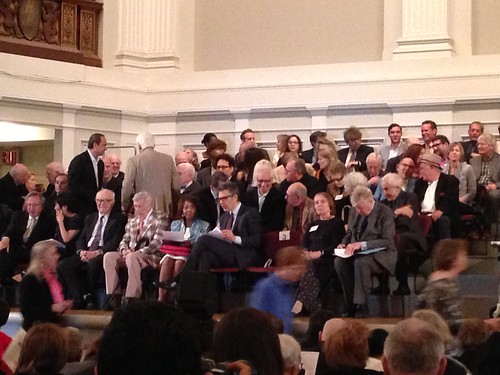 |
| The stage, filling |
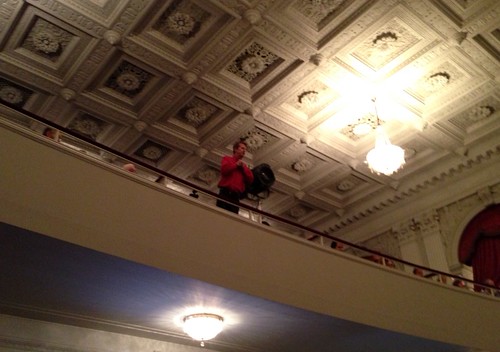 |
| The photographer |
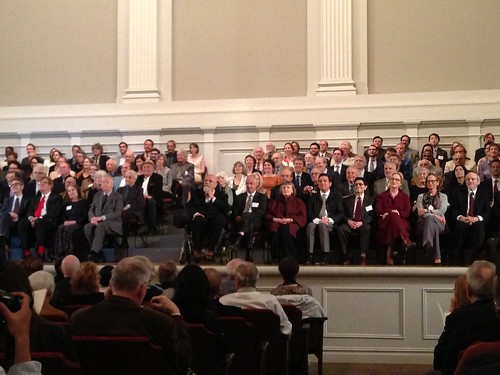 |
| Posing for the group photo |
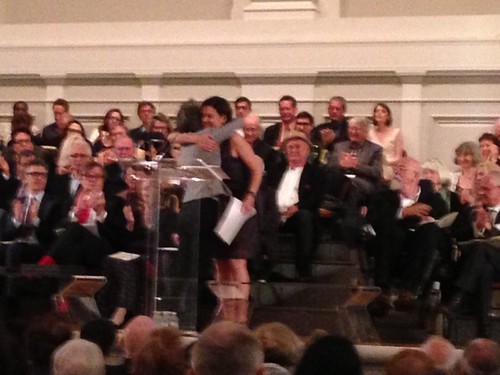 |
| Louise Glück hugging recipient Joanna Klink |
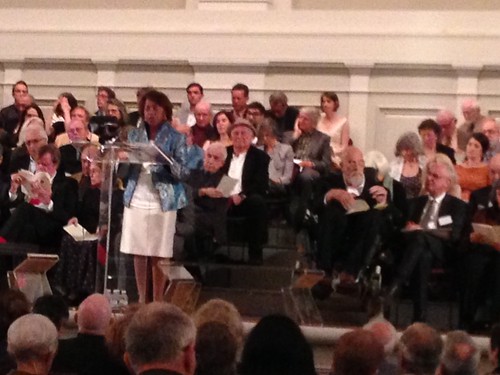 |
| Composer Tania León, announcing awards in music |
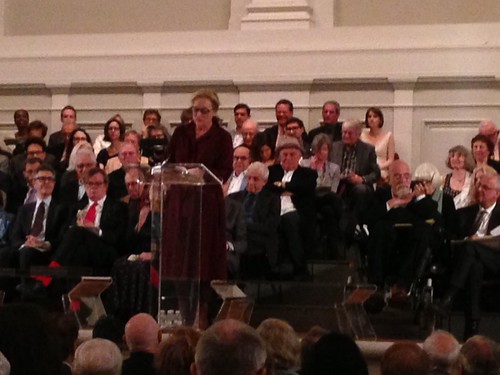 |
Meryl Streep, who subbed for Steven Sondheim
and also presented an award to Edward Villella |
 |
| Artist Njideka Akunyili, receiving her award |
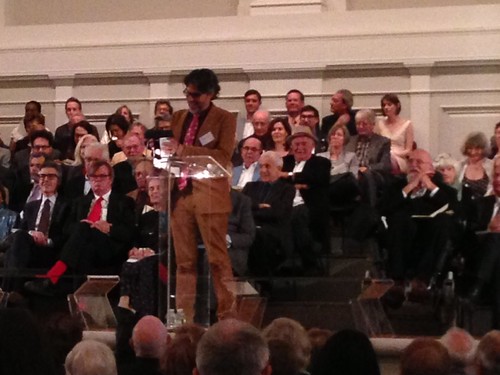 |
| Michael Chabon |
 |
Author and translator Lydia Davis receiving
the Award of Merit for literature |
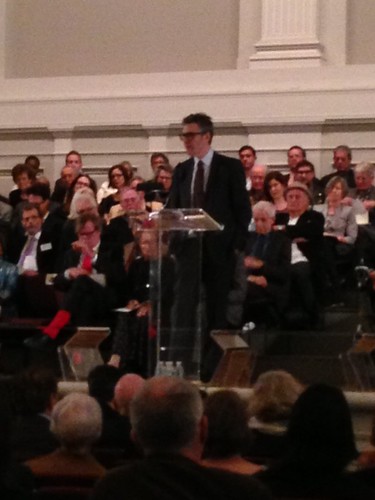 |
Ira Glass, receiving his award
and delivering a hilarious speech |
 |
| Meryl Streep, honoring Edward Villella |
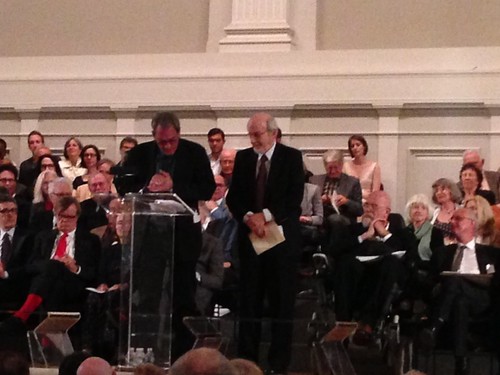 |
Paul Auster, reading his introduction
and citation for E. L. Doctorow
(Garrison Keillor at left, in red tie,
Chuck Close at right, Alison Lurie behind him) |
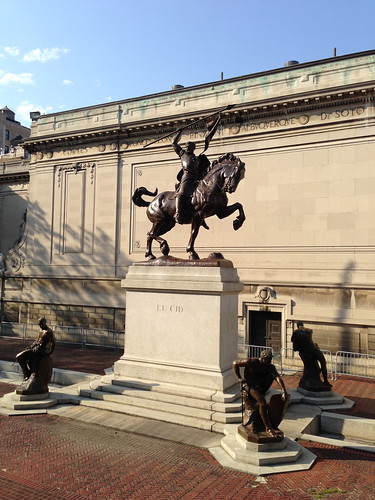 |
| The statue of El Cid, at Audubon Terrace |
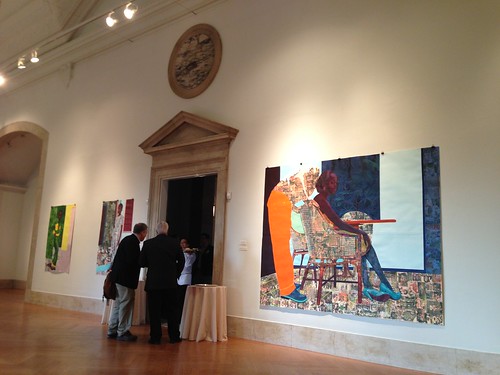 |
The exhibition, with the works of
artist Njideka Akunyili on display |
 |
In the 157th Street station, Ira Glass, chatting
with Calvin Trillin |





























No comments:
Post a Comment